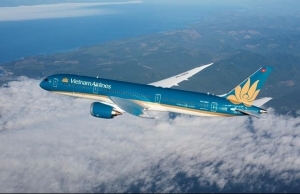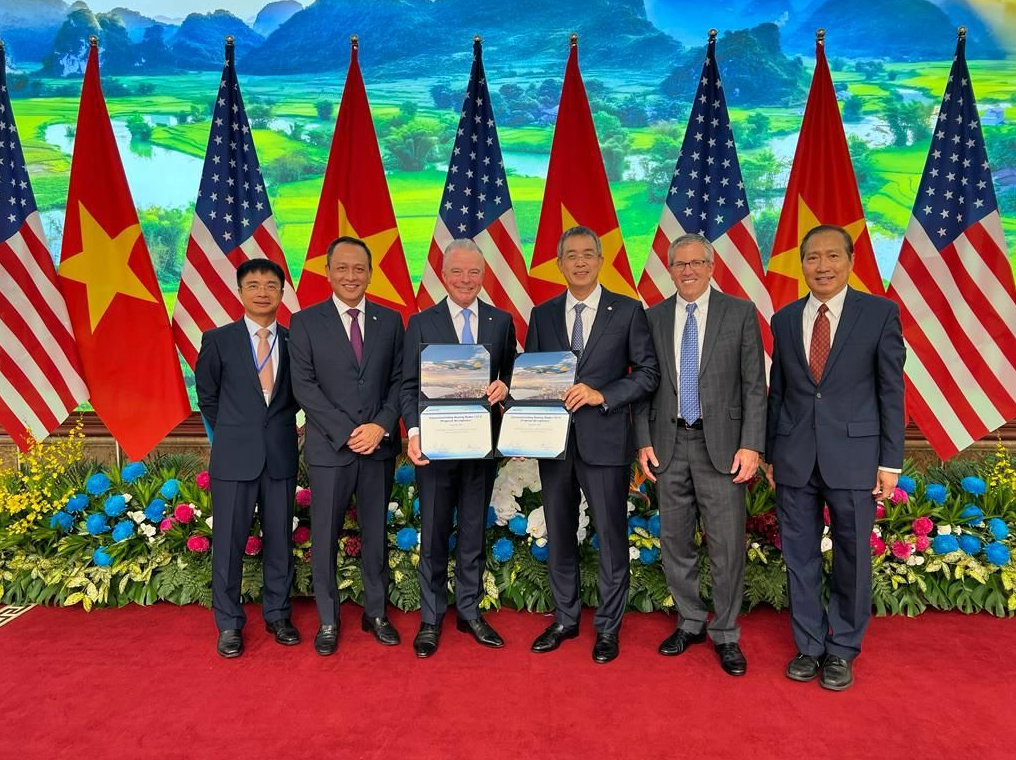Vietnam Airlines steadfast in going digital by 2025
Vietnam Airlines is aiming to become a digital carrier by 2025. How is it doing so far?
 |
| Hoang Ngoc Chi, deputy director of the Digital Transformation Centre |
In 2022, Vietnam Airlines cooperated with Viettel Corporation to build a digital transformation strategy and the roadmap to implement that strategy. At the end of 2022, we issued a digital transformation strategy, in which visions, missions, and goals were clearly set out to become a digital airline by 2025, and have clearly worked out how to make it happen. Vietnam Airlines has a good starting point, with a digital maturity level at 1.57 points in 2022 out of a total of five points, as based on indicators for large enterprises as developed by the Ministry of Information and Communications.
According to the digital transformation criteria, there are six main categories: customer experience, digital strategy, digital technology, digital operation, digital culture, and data. According to this criterion, to become a digital business, we are trying to reach 3.5-4.5 points for each pillar by 2025.
To achieve this goal, Vietnam Airlines has established a digital transformation steering committee headed by Dang Ngoc Hoa, Party Secretary and chairman of the Board of Directors. The committee consists of all EVPs and directors of key department. The steering committee will have quarterly meetings to review the action plan, set up the project priority, policies, and handle arising issues.
With 2025 not that far off, what are the next steps?
We are focused on implementing comprehensive digital transformation to improve the customer and employee experience and thereby increase revenue and operational efficiency. Leaders can make bold decisions based on real-time data. We can then be able to enhance digital ecosystems and products and services operated on digital platforms. We also strive to eliminate friction between agencies, units, systems, and applications.
The popular trend in airlines’ digital transformation globally is to outsource services and move entire systems and applications to the cloud to optimise costs and increase efficiency. We are excited to embrace that trend. Internally, we are also using tools for employees to handle work and other issues efficiently.
Besides investing in digital platforms, Vietnam Airlines also pays special attention to creating an innovative environment so that all employees can be more efficient with the advantages of digital technology. We also launched Vietnam Airlines’ Digital Culture, emphasising the significance of digital culture to our business. This is an important foundation for Vietnam Airlines to develop digital initiatives to help increase the customer experience, operational efficiency, and also optimise costs.
We are accelerating the implementation of the aforementioned criteria to reach 3-3.5 points of digital maturity by the end of 2023, and this is a feasible goal for us. By the end of this year, we will review our progress and propose an action plan. Challenges exist, but with high determination, we believe we will achieve our targets.
What is the biggest benefit Vietnam Airlines will bring to customers when it becomes a digital airline?
Maximising customer experience is key. We aspire to provide the most seamless and comfortable experience for customers. Currently, based on our Customer Data platform, we are focusing on behavioural analysis and data collection to bring the best personalisation service to all our customers.
We understand that only when we improve the customer experience can we boost our competitiveness in the market. Airlines worldwide are also undergoing rapid digital transformation, and some of them are ahead of Vietnam Airlines. For example, Singapore Airlines has used customer personalisation for a long time to recognise customer behaviour, applying relevant tech to identify and verify a customer’s identity. Continued learning is essential to Vietnam Airlines so we can be on par with them.
 | Vietnam Airlines to restore nearly 90 pc of international flight frequency National flag carrier Vietnam Airlines continues to increase flight frequency on routes to Europe, Australia, and China, thereby restoring nearly 90 per cent of its pre-pandemic international flight network. |
 | Vietnam Airlines orders 50 Boeing 737 MAX planes On September11, Boeing and Vietnam Airlines announced that the carrier has selected the 737 MAX family to expand its single-aisle fleet, with a commitment to order 50 737-8 aeroplanes. |
What the stars mean:
★ Poor ★ ★ Promising ★★★ Good ★★★★ Very good ★★★★★ Exceptional
Themes: Digital Transformation
Related Contents
Latest News
More News
- Businesses ramp up production as year-end orders surge (December 30, 2025 | 10:05)
- Vietjet chairwoman awarded Labour Hero title (December 29, 2025 | 13:06)
- How to unlock ESG value through green innovation (December 29, 2025 | 10:03)
- AI reshapes media and advertising industry (December 29, 2025 | 08:33)
- FPT and GELEX sign deal to develop blockchain tech for global markets (December 29, 2025 | 08:29)
- Vietnam’s GDP forecast to grow by 9 per cent in 2026 (December 29, 2025 | 08:29)
- Women entrepreneurs are key to Vietnam’s economic growth (December 29, 2025 | 08:00)
- Vietnam's top 500 value-creating enterprises announced (December 27, 2025 | 08:00)
- The PAN Group shaping a better future with ESG strategy (December 26, 2025 | 09:00)
- Masan Consumer officially lists on HSX, marking the next phase of value creation (December 25, 2025 | 13:20)

 Tag:
Tag:



















 Mobile Version
Mobile Version